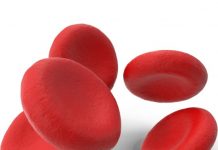This genetic disorder is rather like the classic anemia as far as sickle cell anemia symptoms are concerned. The child is thus born with the defective gene that causes this disease. It takes at least four months for the first symptoms of the disease to manifest. Even then as the infant is unable to complain about most of the internal symptoms, the disease may not be diagnosed for much longer.
This is why screening a child with family history of the disease is a good practice for the attending doctor. If you have a history of the disorder, be sure to share the information with your pediatrician. A simple blood test will enable you to screen your child for the disorder.
Physical signs related to sickle cell anemia symptoms
The most common of all sickle cell anemia symptoms is a sense of overwhelming fatigue. No matter what you do you cannot simply shake off this feeling of tiredness.
Eating the right food, sleeping eight hours and getting regular exercise is all of no use. There is the classic anemic shortness of breath at the slightest exertion.
The patient may also suffer from major headaches and get dizzy spells. The hands and feet of the patient tend to go cold and clammy.
Due to the lack of normal red blood cells the skin of a person suffering from this disease is usually very pale.
Complications arising from sickle cell anemia symptoms
The normal sickle cell anemia symptoms are not dangerous till they begin to hit what is called the sickle cell crisis state. This crisis which is described by patients as an acute pain is the main reason why they seek medical help in the first case. Essentially the crisis occurs when the abnormal sickle shaped red blood cells bunch up together and block a small blood vessel. This cuts of the blood supply to that region of the body and triggers what is termed as the sickle cell crisis. This can lead to more critical conditions.
Depending on where the blocked blood vessel is located, the crisis occurs on the corresponding organ. In the hand and foot syndrome the blocked blood vessel caused swelling in the back of the hands and feet. It can make the fingers and toes painful and even be accompanied by fever. Sickle cell anemia often damages the spleen which makes the immune system of the body weak.
This in turn can lead to a number of secondary infections which includes a high fever. These infections are usually centered in the chest region affecting the blood, the lungs and the heart. If not treated immediately each of these infections can become a potential life taker so get immediate medical attention.














